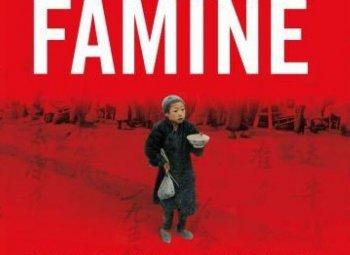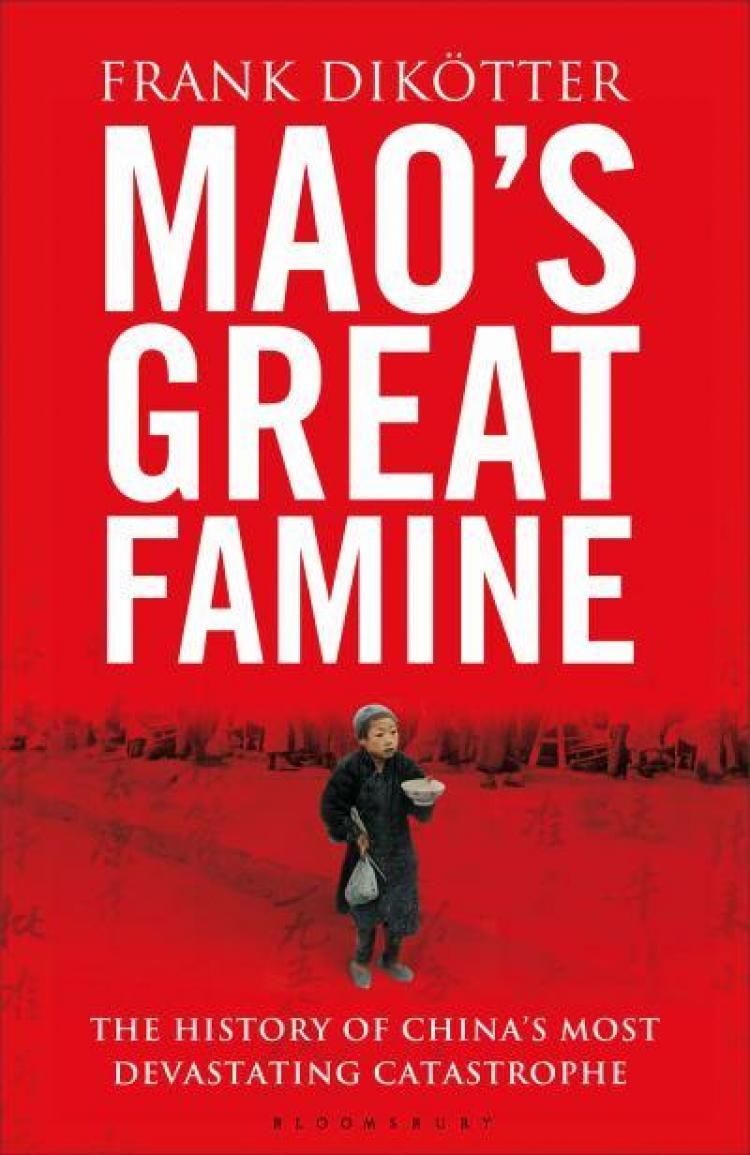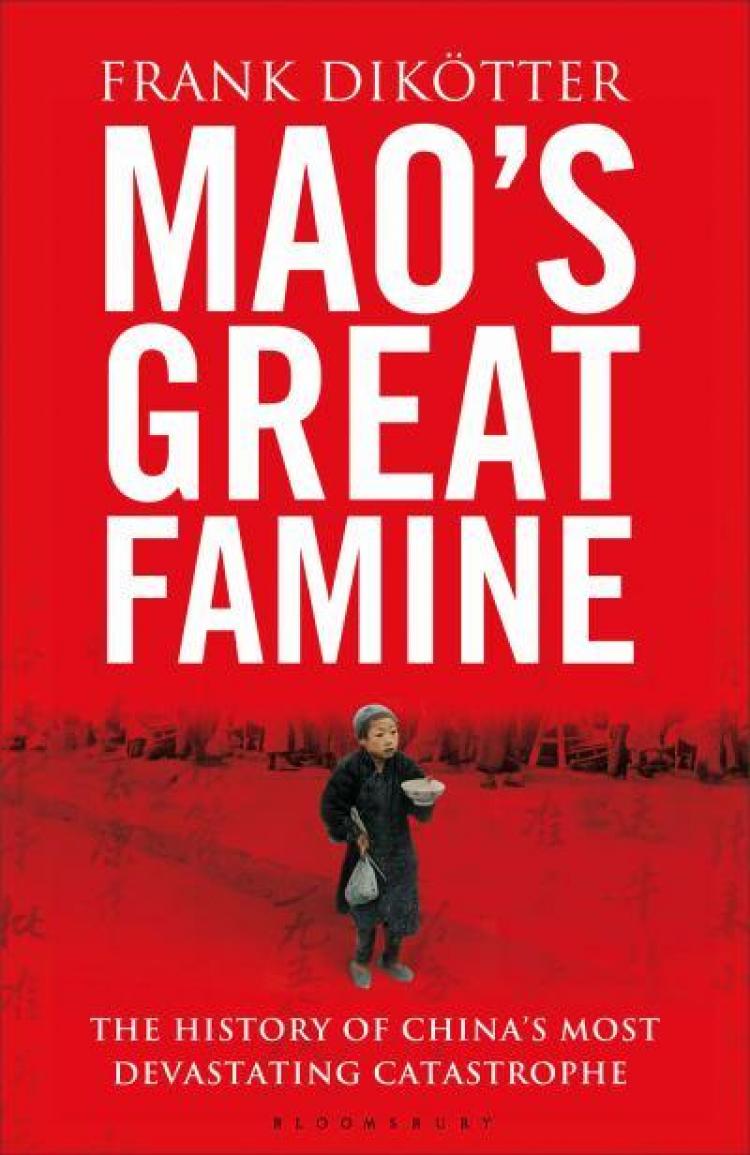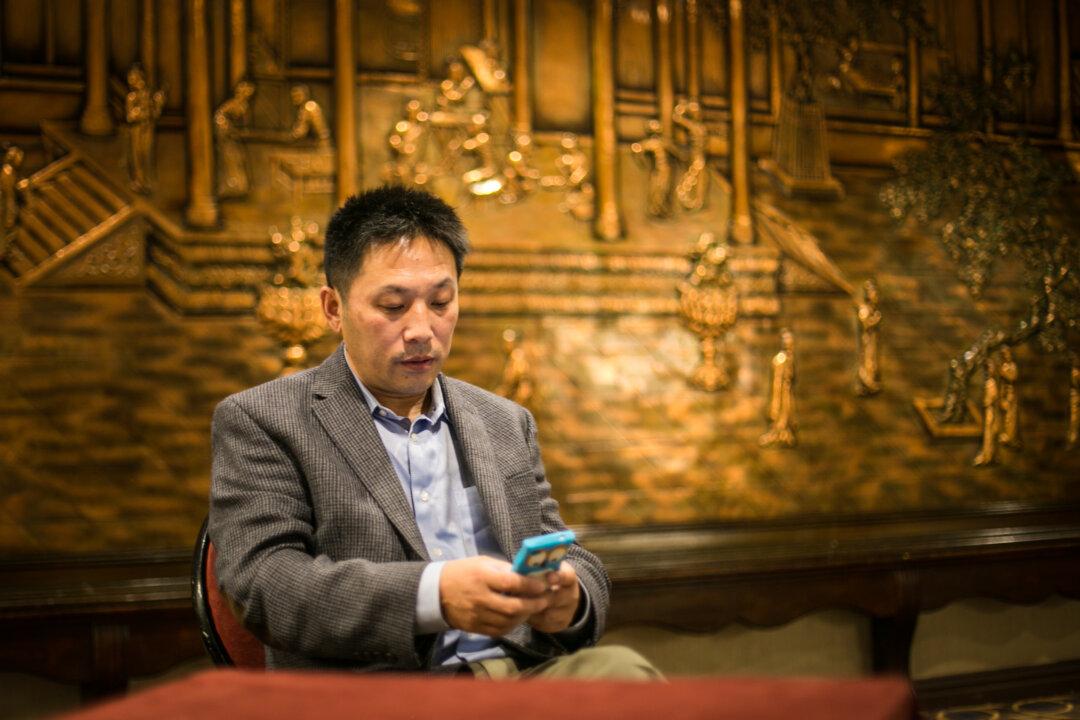“Mao’s Great Famine: The History of China’s Most Devastating Catastrophe, 1958-1962,” by Frank Dikötter. Bloomsbury and Walker Press (September 2010). 448 pages. $19.80. ISBN: 978-0802777683
[xtypo_dropcap]W[/xtypo_dropcap]hat would the coming of hell upon the earth look like? In Mao’s Great Famine Frank Dikötter, a professor of modern Chinese history, gives a convincing approximation. He has also managed to condense the same into a 45 minute speech, delivered on the U.S. university circuit—that’s one minute per million deaths.
The Great Leap Forward, which ran from 1958-1962, broke numerous records in the history of human destruction: the most deaths in a four year period (45 million), the greatest destruction of property, the greatest waste of manpower and resources, the largest starvation in the world, the biggest destruction of forestry, the most blatant lies told in a four year span.
Unlike Jasper Becker’s Hungry Ghosts, or Ralph Thaxton’s Catastrophe and Contention, Dikötter does not rely on interviews. Famine’s mainstay is painstaking archival research, conducted over four years in provincial, county, and city archives.
The death medley to follow is inscribed in the name of the first chapter: “The Pursuit of Utopia.” In it we learn of Mao’s hubristic and utterly impractical plans for remaking China in the image of communist paradise. These include mass mobilization fueled by revolutionary ardor alone, the expropriation of personal property and housing to be replaced by People’s Communes, the centralized distribution of food, plans to leapfrog Britain in 15 years and outdo Stalin by “walking on two legs” (referring to development of both agriculture and industry), and regimenting and militarizing the entire society.
The story of the Great Leap Forward, as told by Dikötter’s rich text, is the attempt to reach these goals, the absurdities their failure resulted in, and the blood price paid by the Chinese people in the process.
Broken into six parts, the first third of the text shows how Mao systematically removed opponents to his plans through purges, and plots out the step-by-step process by which the whole of China was steered into the arms of death. The next three parts are the chronicle of destruction: the ways people survived, the fate of the children, women, and elderly, and the ways that people died, respectively. A body count rounds it out.
“Coercion, terror, and systematic violence were the foundation of the Great Leap forward,” Dikötter writes, taking to task the received wisdom that neglects—often through an evidentiary deficit—to track the role of violence in the famine. Between 1958 and 1962, for instance, between 6 and 8 percent of victims were tortured to death or executed—at least 2.5 million souls.
Food was also used as a weapon, which makes “famine” not quite the right word, Dikötter says. Famine implies a lack of food. In China, there was food, but it was expropriated, wasted, exported.
A reader opening most any page of the book is confronted with one part of a pitiless catalogue of destruction. Examples follow.
In the rush to feed the flames to melt down steel to spur the revolution, pots, pans, cutlery, doorknobs, household items, and farming tools were stolen from the people by party activists; floorboards were ripped up, and in the Qujing region of Yunnan, chickens were slaughtered so their feathers could be burnt or used to make bellows to power backyard furnaces. In the end, most of the steel was useless. The estimated cost of that campaign was 5 billion yuan (equivalent to 34 billion yuan, or US$5.1 billion in modern terms), not including the damage to buildings, mines, forests, and humans.
While a famine was setting in, massive amounts of food went to waste: in Liantan, farmers were called off to deep-plough seven hectares during the autumn harvest; no one was there to collect the crop, and 500 tonnes of grain were abandoned in the field.
As a result of the destruction of the transportation system, in 1960 in Tianjin, Bejing, Hankou, Guangzhou, and other cities, goods incoming to the railways exceeded those leaving them by 10,000 tonnes a day. Some things were hoarded, others simply dumped into ditches. In Shanghai, millions of meters (hundreds of miles) of much-needed cotton, and millions of yuan worth of other goods rotted or rusted in storage.
In order to satisfy Mao and the Great Leap, grain quotas from the farms on the ground were fabricated to senseless proportions (failure to project a big enough leap in grain output was “rightist conservatism”). Sometimes, the fabrication was of the order of hundreds of tonnes. Each official tweaked the figures all the way to the top, and higher-level officials made a lot of promises.
So in 1959, while starvation was setting in, Communist Party leaders exported massive quantities of grain and other goods so as not to lose face with foreign debtors. This included cotton. Thus, as peasants in rural areas went into winter without cotton-padded clothes, 14 million bolts of the stuff were sold abroad at below cost price.
Of the over one million people that died in the Xinyang region in 1960, about 67,000 were clubbed to death with sticks.
In 1960, in Cixi county, Zhejiang Province, 2,000 villagers were poisoned in one month by eating cakes made of cotton seeds; in Henan, 100,000 were poisoned in one region, 150 dying.
Throwing to the wind practices of animal husbandry developed over the millennia, cadres drew on the crackpot theories of one of Stalin’s protégés and attempted to create hybrid varieties of livestock. County leaders in Zhejiang tried to cross-breed sows with bulls, for example; those that were artificially inseminated often ended up crippled.
Lack of planning led to the construction of a “Friendship Hotel” in Lanzhou for foreign (mostly Soviet) experts; the number of guests was misjudged and 170 foreigners were each afforded roughly 60 square meters (645.8 sq feet) of luxurious accommodation, while villagers died of cold and hunger just outside the city. Except for the last part, such wastage still happens in China.
Starving villagers ate plaster from the walls of their houses to survive; one girl ate the thatch of her roof and found it delicious.
Mud houses were torn down, their occupants expelled, the materials pulped, and the remains distributed on the fields as fertilizer.
Bodies of the dead were disinterred, stewed, and used to the same end.
Without proper oversight, some companies did whatever was handy to make a buck or expand their interests. One arm of the Commercial Bureau of Nanjing razed a fruit yard of 6,000 cherry, peach, pomegranate and pear trees, in the end not even using the cleared field. Elsewhere in the city 75,000 trees were illegally felled, the wood used for industry or sold on the black market.
Irrigation practices driven by the Communist Party went against the natural topography and destroyed the balance of underground water. In Tongzhou, when it rained heavily, the region was entirely flooded because the water had nowhere to go. Crops that could have fed people were thus destroyed.
The whole country was mobilized in a war on birds: banging drums, hitting pots, pans, and gongs, people tried to keep sparrows flying until they simply fell out of the sky from exhaustion. Sometimes this took days. Other pests were also targeted, with a total death toll in Shanghai alone of 48,695.49 kilograms (107,355 pounds) of flies, 930,486 rats, 1213.05 kilograms (2,674 pounds) of cockroaches, and 1,367,440 sparrows. Predictably, swarms of locusts and grasshoppers struck back, devouring millions of tonnes of grains, in 1960, when people were starving to death.
As would be expected, women, children, and the elderly fared the worst under the conditions.
Women were kidnapped, raped, and made to wash the feet of guards when intercepted while trying to escape from the country to the cities. They were made to work while menstruating. Sometimes their uteruses collapsed. Mothers in late stages of pregnancy were forced to work. In November 1958, 300 women were forced by a cadre to do their field work naked. Other women were sexually humiliated and committed suicide afterwards. The plight of the elderly can be imagined.
Children were abandoned, others forced to work, and in some places locked up like animals if they did not work. In Fenxian county 2,000 children aged six to ten were put in a re-education camp under the Public Security Bureau. They were kicked, made to stand and kneel for long periods, and had needles inserted into their palms as punishment.
They fought each other for food. They had their food stolen off them. At home, weaker family members, including children, were deliberately starved. One man ate the ration of his eight-year-old daughter, took her cotton jacket and trousers in the middle of winter, and let the hunger and cold usher her out of life.
Dikötter devotes a whole section to the struggle for survival. People did anything: eat grains raw in the fields, eat grass, bark, tree roots, and sometimes, the flesh off corpses.
Party cadres had an easy time, as their positions of privilege allowed massive theft and extreme indulgences. Top cadres were driven around in chauffeured cars; officials would attend banquets and devour hundreds of kilograms of meat; in 1958 in Shanghai, 50,000 officials stayed in state run hotels and ate at banquets for one month, on the pocket of the people.
Pleasure cruises were organized along the Yangzi River, with delicacies, cigarettes, and alcohol served by high-heeled waitresses in new uniforms. “The sound of laughter, chatter and clinking of glasses travelled over the waters of the Yangzi, surrounded by a stunningly beautiful landscape blighted by mass starvation,” Dikötter writes.
Corruption took off. Cadres with access to resources scooped into the bucket elbow-deep, trading supplies with comrades in other areas: tonnes of sugar, alcohol and cigarettes were traded, hundreds of tonnes of oil, gas, and coal; pigs were exchanged for cement and timber. Many cadres simply stole.
Citizens who wrote letters to Mao were sometimes caught, arrested, and attacked. One man had his eyes gouged out and died in prison a few days later. Driven to desperation, some villagers banded together and began assailing granaries, canteens, and other villages. In 1961, pyromania took off in Guangzhou. Sometimes, thousands would ambush freight trains.
After close to 400 pages of this, the reader is apt to wonder: Why? Dikötter does not dabble in theory. He notes only that the Great Leap was a war against man and nature, without attempting to draw out any greater insights into the nature of communist ideology.
Nevertheless, “Mao’s Great Famine” is a lucid presentation of precisely the central tenets of communism in action. The Great Leap was the greatest war the regime had waged against the Chinese people, and it shows perfectly the Chinese Communist Party’s attempt to construct an alternative reality based on Maoist hokum, both sinister and ridiculous.
“Mao viewed nature as an enemy to be overcome, an adversary to be brought to heel, an entity fundamentally separate from humanity which should be reshaped and harnessed through mass mobilization,” Dikötter writes. They “held that human will and the boundless energy of the revolutionary masses could radically transform material conditions and overcome whatever difficulties were thrown in the path to a communist future.” Not so.
In the pursuit of this second reality, war was waged—hence the wholesale militarization of Chinese society that Mao openly calls for, and that Dikötter painfully documents. It soon becomes clear that communism’s real war is against reality itself, which is stubborn, given, and non-idealistic. Dikötter’s offering is an exhaustive catalogue of just how that war was carried out, and what were its human consequences.







